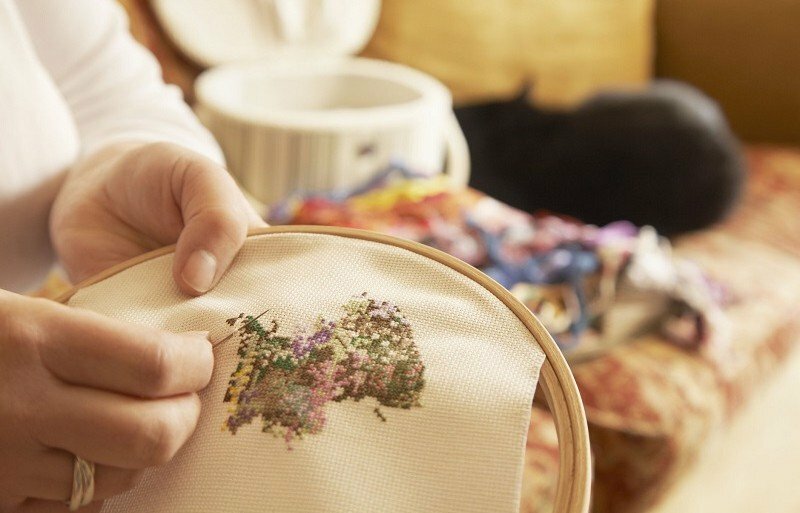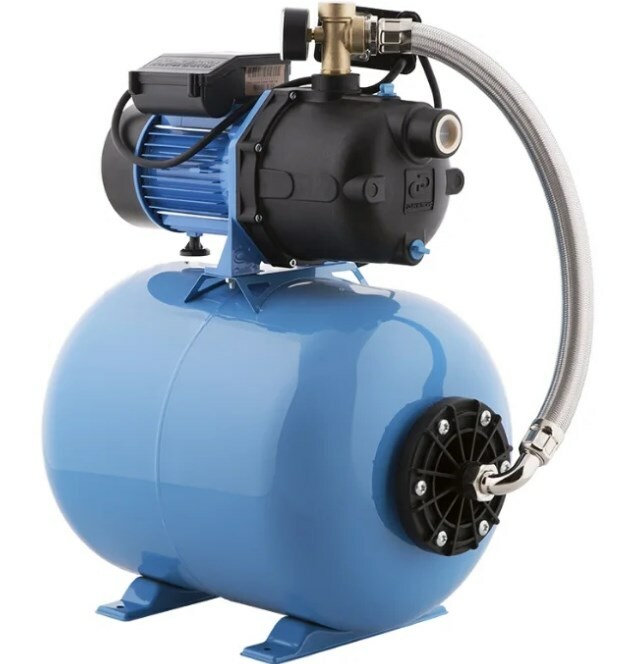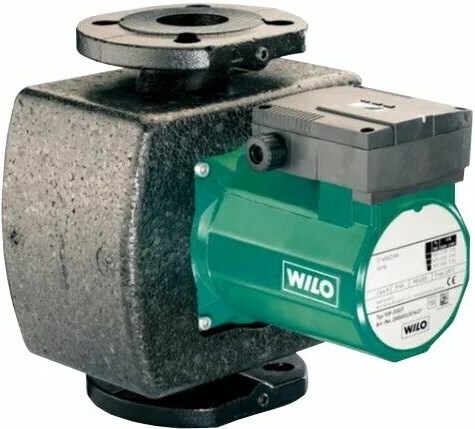Facing materials are always in great demand. One of their species - wall paneling. It has established itself as a high quality product that has many positive properties. In the market there are a wide variety of profiles, allowing you to create different textures and attach the panel anywhere. The primary raw materials can be used in almost any type of wood. Molded become familiar material for finishing the steam rooms, but it can also be found in expensive private homes. laying pattern chosen individually. He can be horizontal, vertical, diagonal, combined. Nowadays, popular complex configurations. Lining has a good reputation. She has a neat appearance and improved properties. In the presence of basic knowledge clapboard siding can be done in-house.
Content
- Advantages and disadvantages of finishing
- types of lining
- Types lining profiles
- Kind of lining from wood
- grade lining
- where to apply
- plating scheme
-
How to sheathe their own hands
- How to prepare battens
- Preparing walls
- Create a crate for fasteners
- Methods of fixation
- Process fastening lining
- Rules of installation plinth to the wall paneling
- Methods of decorative finishes
- conclusion
Advantages and disadvantages of finishing
Initially linings used for the finishing train interiors. Even then, people paid attention to its ability to mitigate the humidity drops and temperature. She quickly fastened profiled joints - this is another plus. Then battens improved: changed shape and grooves, improved structural characteristics. Finishing modern lining has many advantages. The first is the convenience and speed of installation thanks to tongue and groove system. Another advantage - environmentally friendly. And one of the main advantages can be considered a low price for a sufficiently presentable appearance. Finishing lining has several drawbacks. Material can spoil parasites. The rotting also becomes a cause of deterioration of the appearance of the lining. Another tree absorbs a lot of moisture and heat, and due to this port. However thereby it improves the air in the room.











types of lining
Conventional linings characterized by the following dimensions: thickness - 1.2-2.5 cm, width - 15 cm, length - up to 6 meters (mainly just such was in older guests). In less than a standard lining spike - 4-6 mm, with 8-9 at Euro deal. Humidity conventional material is 8-12%, 25-35%, European version - up to 12%. Old type of lining made of natural moisture of the material. Lining - High-quality sheathing board for exterior and interior walls. It is well masks disadvantages and is capable of leveling the surface. In addition, it performs a sound and heat insulation function. Lining has certain fixed parameters. Thickness is 1.3, 1.6 and 1.9 cm. Width is 8, 10, 11 or 12 cm. The maximum length of the board is 6 meters, but this figure depends on the manufacturer and is very different in different cases.

Wood, from which made Lining:
- oak;
- Linden;
- Pine;
- spruce;
- aspen.





Types lining profiles
The decoration is important to a variety, so manufacturers produce different variations and modifications lining. Traditional Lining after installation forms a distinct seams. If this type of lining has a rounded chamfer, then it «Softline». Its outer portion devoid of angles, allowing to protect the wood from burrs and chips for a long time. «Softline» is well-suited for saunas. Molded "Calm" has no chamfer near the thorn, and, as a consequence, pronounced seams after the assembly will not be. The thickness of up to 2.5 cm, whereby it can be used for facades. "Landhaus" - siding with complex curved shape along the edges. Finish this coating will make the interior more "expensive". Another interesting option - "Blockhouse" feature is the rounded front side. This material can be surfaced within timbered houses and facades.

A few types of lining:
- "American". It has a sloping surface. The elements are placed overlapping.
- Double-sided. Both sides are facial. It is used not only for walls, but also for the construction of partition walls.
See also:Mural in the interior of a modern kitchen

Kind of lining from wood
Wall paneling made from coniferous, deciduous trees and of exotic species (eg, mahogany). Among the coniferous stands out spruce, pine, larch and cedar. Spruce endowed with softness, it is important for the manufacture of boards with rounded shapes. This material looks great in a modern interior. Molded from a pine - a budget option, which has many important qualities, including high strength. Larch - one of the most expensive softwood. cedar boards have a pleasant natural odor, beneficially affecting the body. Among the hardwoods are the most popular oak, alder and basswood. Oak wood - durable and popular material. Molded from this tree is considered a classic version. Alder is suitable for use in wet areas, since it does not absorb moisture. Linden tree is very resistant to deformation and mechanical damage. Molded from it is relatively inexpensive.

grade lining
Are 4 varieties:
- Extra;
- Class A;
- Class B;
- Class C.

Boards are sorted according to the presence of pockets of resin expressed by blue, knots, cracks, neprostroga (poorly treated areas). The variety is characterized by the complete absence of an extra neprostroga or small defects on the face. On one linear meter can be a bright speck. Class A is permissible micro cracks and small rough areas. At the longitudinal ends of the crack is not permissible longer than width of the board. Profiles of the core should be no more than a fifth of all boards. On one linear meter acceptable availability 3 knots. With regard to Class B, that on one such board allowed the presence of 2 dropping out knots. The obverse allowed cracks to 3 cm, and the rear end - of any size. All panels can be made from the core, while having a resin pockets. Class C refers to all boards that are not included in the category of extra to class B, but is suitable for use. There shall be no putrefaction.

where to apply
Finishing lining often used in steam rooms and other rooms of baths. In this case, the selected pane of lime and alder (for parylene) and softwood (for other people). These woods are endowed with medicinal properties, due to the substances that are released during heating. The steam rooms can not be used boards with knots, as the respective portions of extremely hot. For the good flavor it is recommended to install several pine boards in the furnace area. Treated protective structures lining suitable for cladding facades, tree species in this area has special significance. Interior decoration - a complex exercise, needed the panel in a uniform color scheme. Molded mahogany used for walls in expensive mansions. Panels also make partitions for the division of space: in the flats, and in an open area.











plating scheme
There are two ways - by an external mounting and hidden. When an external method, the board is necessary to fix the fasteners. In the second case, the panel attached to the crate with the side of the slot, where there is joint with a thorn. Appearance at such an embodiment, will be more aesthetically pleasing. Wall paneling can be mounted vertically, horizontally and with the needs - an unusual way. When laying horizontal panels tine necessarily directed from lower to upper element, and not vice versa. If log wall paneling used staples and nails for them and crates. To sheathe clapboard room with smooth walls, the bars should be used. They are placed at a distance of no more than 50 cm between adjacent elements and perpendicular to the panels. Paneling framed decorative skirting and fillets
The main methods of fixing:
- nails;
- screws;
- cramps;
- klyaymerami.

How to sheathe their own hands
You will need to perform the following stages of work:
- Prepare battens.
- Lead to the wall is ready.
- Collect crate.
- Battens attached to the trellis frame.
- To finish coating baseboards and needs other elements.
See also:Wall panels in the interior 75 photo example in design
First, the panel being processed. Depending on the application site, the treatment may be subjected to any class lining. Always required to prepare a surface of class C. products The same applies to the lining, made with his own hands. Preparing walls is their alignment and road marking under lath. Dub is not necessarily, you can instead make other manipulations. Crucial moment is the installation of lathing. Selected timber itself, and the distance between the elements. Configuration depends entirely on the intended method of laying lining. For fixing panels use different approaches. The main work - careful, because sloppy clogging of the fastener can cause serious defects in the material. When the lining is ready, start the installation baseboards and finishing.

How to prepare battens
If the panel treated with the needs of fine-grained sandpaper to remove rough edges. Further processing begins with cleaning the surface of the material. If you plan on applying to the battens wax or varnish, used pre-stain. It helps to preserve the color of the wood. Stain is 3 kinds: oil, alcohol and water based. Antiseptics protect the wood from moisture and mold. If the installation place is Bath, definitely need a waxing treatment. It is applied in a small amount in the direction of the fibers. This procedure must be repeated several times. then polished product. Among other things, the color of the boards will be more profound. The sale of a variety of surface treatments with wax, which are also suitable for the preparation of lining. The last stage - the application of the varnish. It takes at least 2 layers. Before installation, the material must be perfectly dry.

Fatty stains can be removed with 25% acetone.

Preparing walls
On the wall is required to do under the crate layout. This action is done with a pencil and level. With the configuration plating and the direction in which the lining will be located are determined in advance. Bars are always perpendicularly. If nuance about it all is already solved - you can begin to process the walls and antifungal agents rascherchivat surface. In which case, the pencil is replaced by chalk. Lathing step width is selected depending on the purpose. For durability, it is desirable to make it as small as possible. Usually this figure is in the range of 35-60 cm. If you plan to insulation of the room, a step is determined based on the amount of insulating material and should be a bit less in the future. To frame structure was flat, you need to use a plumb line and fishing line. Visualization is created, on which faces then placed bars.

Create a crate for fasteners
This is one of the most important stages, having a significant impact on the final result. Only occasionally lining is attached directly to the wooden walls, in other situations - is needed crate. In the beginning, we select timber. For this batten bar section 40 × 20 mm - optimal option. The framework set up by one level. If you need to - produce the alignment of each individual wall. You can go the other way - to determine the most protruding place on the wall. Then there puts a small piece of timber and out of the crate mounted. From that point, the thread is pulled parallel to the intended direction of laying the panels. The extreme points of the walls 2 are placed carrier rod. If necessary, between the wall and the brick laying set. If the number of lining will be installed from the 2 boards at the interface need another timber.

Other important details:
- when fixing the level of the design should be checked;
- in the presence of the door or window openings and bars sure to fasten around them;
- installation on the ceiling lathing is done in the same way as on the walls.

Methods of fixation
Battens fastened via steplernyh staples klyaymerov or fastening elements (screws, nails). When installing the need to remain cautious in order to avoid splitting the wood and cracking. Full nail head entry into the material and orderly operation is provided via dobojnika. When mounting hidden panel nailed to the frame means at the junction of the ridge with the groove. The most simple and easy method of assembly - fixing small nails in any place, but it is better to prefer a neat way of providing for driving nails into the grooves to hide the connection. Maximum fastening is provided klyaymerami quality of metal. They come in different sizes, shapes, and are calculated on a certain thickness of the board. Fasteners one side connected to the crate and another cut into the grooves.
See also:Wallpapers for the kitchen: 75 design and photo examples

Mounting on the ceiling lining requires targeted actions, so it is best to do this together with a specialist!

Process fastening lining
With proper installation batten, installation lining process will take place without complications. When attaching the first panel may need to level. The first question before the installation is on which side to start laying planks. Determine the answer, you can learn how the surface is flat. If it corresponds to the level, then you can start laying on either side: top, bottom, right, left, at the corner. The first board then placed on the level. If the surface is a little "littered", or some angle is uneven - so you can not install the board. Otherwise, they visually accentuate the curvature. Battens need to collect in other ways. The first board is attached very close to the corner, the rest - with a slight tilt in the right direction. Sooner or later some will fall on the panel level. All "fill up" the board equally. First you need to put a thorn in the corner.

Rules of installation plinth to the wall paneling
For aesthetic reasons paneled walls make out the floor and ceiling moldings. Sometimes they need to be mounted on a wall (corner). When decorating the corners guided by the rules if there is an adjacent non-insulated wall, the plinth is mounted on it, and when placed between the two should be trimmed to mount shorter. These measures should not interfere with the thermal deformation and shrinkage of surfaces exposed to them the most. If the wall is framed with clapboard, the fixing of skirting boards made using finishing nails. Of hammer through the body, narrow head out into an array. These locations are then processed wax pencil. If the surface is not flat (for example, a log), the normal nail the baseboard does not always succeed. May remain gaps. It is likely that in the corners of the skirting boards do not come together. Instead, they can be used flat plat. They lie close to the wall, and you can make them his own, including the lining.

Methods of decorative finishes
If you are installing a hidden manner, it is recommended to use a decorative fasteners. Snug fit and decorating nails in the wood provide dobojnika. Decorate angle between the boards can be treated using the timber - so in the opening will not be gaps. If the natural color of wood does not fit into the interior, it does not impart any flavor, then the battens cover the paint. Better in one tone with furniture or white. Hats of nails that secure the starting board, close decorative corners. If decorative slats missing, the tops of the fasteners are removed a side cutter. All joints, inner and outer corners must be closed. Used for decoration including the lower ceiling and skirting boards. The interior can be dramatically improved by setting the top bunks false beams.






conclusion
Molded - demanded finishing material. It varies according to the metrological standards, profile, tree species and varieties. Casing lining has an attractive appearance and useful properties. This material was used in the baths / saunas, apartments, houses, on balconies, land, transport. The scheme is the outer attachment and countersunk. The second option is more aesthetic. Sheathing surface can be yourself. The first step is carried out preparatory work - processed boards on walls and ceilings is drawn markings. Panel lacquered, coated with impregnation and wax, paint, and in some cases lack the minimum surface treatment. The next thing is mounted crate. The panels are fixed to it by means of special funds. Fitting technology differs depending on the correctness of the shape of surfaces and corners.



